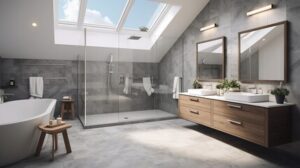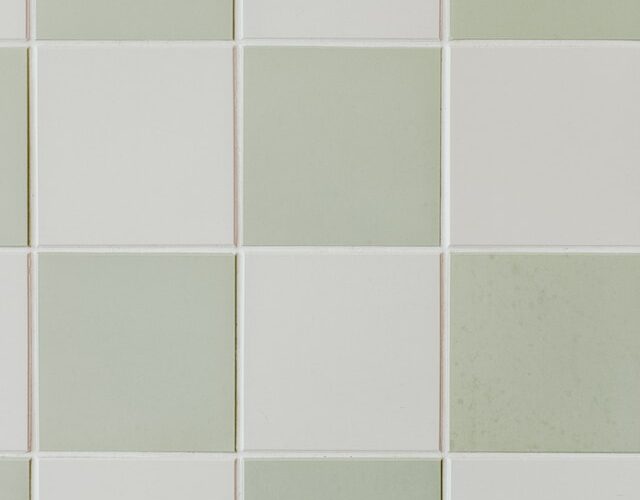When remodeling a bathroom, keep your goals in mind and avoid over-extending yourself. For example, if you add a second sink or granite countertops, consider how that will affect your storage spaces and utility locations.
Changing the layout of your bathroom is a big project that should be left to professionals. Moving a toilet, enlarging a shower or installing a new tub are examples of layout changes. Contact Bathroom Remodeling Richmond VA now!

A well-designed bathroom should be both functional and attractive. It should also be easily adapted to accommodate changes in physical ability and lifestyle. If you’re planning to remodel a bathroom, consider installing energy-efficient fixtures that will help save money over the long term and minimize your environmental footprint.
The first step in the design process is to create a budget and decide how much you’re willing to spend. This will help narrow down the options and make it easier to choose finishes, fixtures, and other details. If you’re unsure of where to start, it’s often a good idea to consult with a professional designer who can provide guidance and suggestions.
Another important consideration is how to maximize storage space and layout. Having enough storage can help prevent a cluttered and unorganized look and feel. It can also be a great way to add some personal style to the room.
Once you’ve established your budget and chosen a layout, it’s time to get started with the actual construction. During this phase, it’s important to stick to your budget and avoid splurging on items that you don’t really need. It’s also important to allow for extra expenses such as unexpected labor or material costs.
If you’re doing a full-scale renovation, it’s usually necessary to remove and replace the existing drywall. This is more invasive and expensive than simply replacing fixtures and finishes. It may also require the services of a professional demolition crew and may affect the overall timeline of your project. If you’re using new drywall, it must be moisture-resistant to prevent mold and mildew growth. It’s also a good idea to install an exhaust fan to reduce humidity levels in the room.
One of the most important decisions to make in any bathroom remodeling project is how to arrange the space. Whether you have a large master bath or a cozy guest bathroom, getting the layout right can take your project from a DIY fix to a high-end renovation.
Depending on your goals and budget, you can go as far as completely rethinking the entire room’s layout, or simply moving around some of its elements. For example, if you’re looking to add a second sink for couples or siblings, or if you’re thinking about adding home accessibility features, that might mean moving the toilet and creating a new floor plan.
The more extensive bathroom remodels can be the most expensive but also provide the most flexibility. This level of renovation typically involves changing or relocating some of the major fixtures, such as the tub, shower, sink, and toilet. It may also involve changing the location of electrical wiring, plumbing hookups, ventilation, and flooring.
It’s important to consider all of these factors when deciding which level of remodel to choose, because the more changes you make, the more work and expense you’ll have to deal with. Moreover, it’s often more cost effective to stay within the existing footprint and move only the fixtures that can be easily moved.
To help you make the most of your space, try using a user-friendly bathroom design software or app with planning tools that offer 3D visualization and allow you to experiment with different layouts and designs. These can be great visual aids to show contractors and other professionals and can help you stay on budget by preventing costly misunderstandings and delays.
There’s a lot of specialized work that goes into a bathroom remodel. Plumbing, electrical, drywall and even framing can all be tricky for DIYers to take on. Unless you’re a licensed professional, leave these tasks to professionals. Any plumbers you hire should be licensed and insured to ensure your project is completed correctly and according to the local building code.
This is important for your own safety and the long-term durability of your bathroom. If you don’t follow proper codes, you could risk water damage and potential hazardous wiring issues down the road. It’s also a good idea to have any work done by a licensed professional so you can make sure they’re up to date on any changes in the local building code.
Some small cosmetic renovations do not require a permit, but more substantial remodeling projects often do. Moving fixtures, running new pipes for water and sewage, and a tankless hot water heater can all be considered major changes that require a permit. It’s a good idea to check with your city or county building department to find out what the rules are for your area.
As you’re moving through your bathroom remodel checklist, it’s a good idea to complete each task in a specific order. This can save you time and money by preventing messy clean up and by keeping the mess from one task out of the areas still needing work. For example, if you’re installing a new shower stall or tub it’s best to do this before laying tile. This will keep the newly framed walls protected from moisture. You should also install cement board and vapor barriers to protect the walls from moisture when you’re doing your drywall later on.
Electrical components like lighting fixtures, outlets, and switches are crucial to the functionality of your bathroom, but they also play a major role in its aesthetics. This is why it’s important to choose the right ones that complement your overall design aesthetic and meet your needs. For instance, recessed lights can add an elegant touch while providing ample light. They can also be installed with dimmer switches for a more customizable lighting experience. However, if you want to create a more modern and contemporary vibe, wall sconces are an excellent choice.
Another aspect to consider when choosing electrical fixtures and switches is their power capacity. It’s essential to know how much your circuit can handle during a remodeling project so you don’t overload it with too many appliances and installations. An electrician Vancouver can help you assess your home’s power capacity and ensure that any new additions are up to code.
Finally, you’ll need to install outlets for appliances such as hair dryers and electric shavers. These should be GFCI-protected to avoid electric shocks and are especially important near water sources. Your electrician can help you determine the number of outlets you need and where they should be placed.
Depending on the scope of your remodel, you may need to obtain permits before beginning any electrical work. Generally, any changes that affect plumbing, lighting, and/or structure require permits. However, if you’re only replacing a fixture like a shower head or toilet tank, you might not need to get a permit. It’s best to hire an experienced and licensed electrician to ensure that your remodel is safe and compliant with local codes and regulations. When interviewing potential electricians, ask for references and their portfolio to see their previous work. You should also pay attention to their communication skills and professionalism.
While many homeowners focus on tubs, tiles and faucets in their bathroom remodeling projects, the lighting work that needs to be done is equally important. The right fixtures, sconces and bulbs can take your bathroom from drab to fab.
Bathroom lighting should include all three types of light: ambient, task and accent. Ambient lighting provides general illumination of the room and can be accomplished with rows of recessed lights; ceiling-facing light fixtures that cast light throughout the bathroom; or decorative central light fixtures that create a focal point in your bathroom.
Task lighting is used for activities like bathing and grooming, and the goal of this type of lighting is to provide sufficient illumination for safe movement around your bathroom. It can be achieved by installing wall sconces on either side of your mirror or a fixture above the shower stall or bathtub. These light fixtures need to be positioned properly to ensure adequate illumination. They should be centered over your mirror and mounted about 28 inches apart, with the top of the fixture at least 78 inches from the floor.
Accent lighting falls between task and ambient light, as it is used to highlight a feature of the bathroom or its décor. These can be recessed or hanging fixtures, such as chandeliers. Directional recessed light fixtures can also be angled to illuminate artwork or other impressive design features in your bathroom.
Lighting and sconce upgrades can be completed by homeowners who are comfortable with DIY projects, but electrical and plumbing work should always be left to licensed professionals. These experts can guarantee that your new bathroom will be safe, up to code and fully functional.

